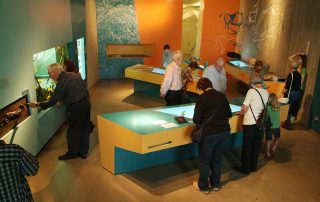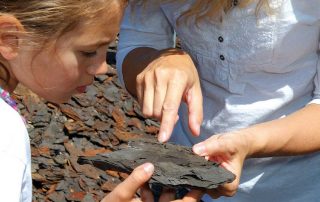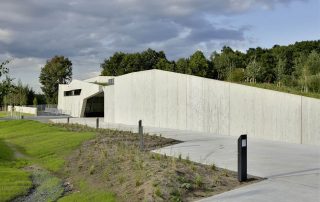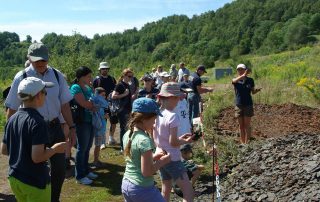
Messel Pit Fossil Site
With more than 40,000 finds to date, the Messel Pit is one of the world’s most productive fossil sites, documenting dramatic changes to the biosphere during past geological periods. It reveals the wonders of evolution around 47 million years ago and was designated Germany’s first UNESCO World Natural Heritage site in 1995.
It may be hard to believe now, but back in the mists of time the area around Darmstadt consisted of a volcanic lake surrounded by a tropical forest. The result is that Messel Pit offers a particularly bio-diverse window into life in the Eocene period. The oil shale hides a wealth of excellently preserved fossils whose diversity and quality is simply unparalleled. These include more than 100 plant species, 8 fish, 31 reptile, 5 amphibian, more than 50 bird and more than 30 invertebrate species.
Exhibits of particular interest are the various mammals, especially the remains of prehistoric horses such as the Eurohippus, which would have fit comfortably in a shopping bag. So far, more than 30 complete skeletons have been recovered. Preserved stomach contents and soft tissue samples even provide information about diet and lifestyle.
The pit can be visited as part of regular group tours. A visitor and information centre on the edge of the pit opened in August 2010. Its design is based on the oil shale stratification. There is also a viewing platform offering views of the pit site for visitors who do not wish to take part in a guided tour. In addition, there are numerous information panels should you wish to explore the pit individually.
The insights gained from a tour of the site can be explored in greater depth at the fossil and local history museum in the nearby town of Messel, at the Hessian State Museum in Darmstadt and at Senckenberg Natural History Museum in Frankfurt am Main.
Messel Pit Fossil Site
UNESCO World Heritage since 1995
From the selection criteria
Messel Pit Fossil Site was put on the list of World Heritage sites as the first German natural monument.
It provides a unique insight into the early evolution of mammals and documents the history of the Earth’s evolution 48 million years ago, when, after the end of the dinosaur age, explosive changes
affected the flora and fauna.
Information and Contact
Welterbe Grube Messel gGmbH
Roßdörfer Straße 108
64409 Messel
Tel. +49 6159-71 75 90





